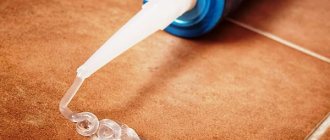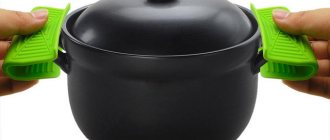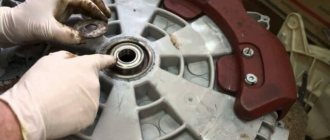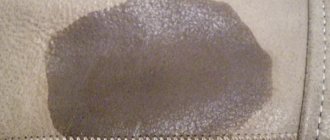Ensuring a seal in the bathroom means preventing moisture from entering the floor, wall structure or surrounding objects. For these purposes, a special material is used - sealant. It fills joints, junctions, all kinds of cracks and holes.
Sometimes it becomes necessary to remove outdated material. A reasonable question arises - how to clean the sealant from the bathtub.
Types of sealants
The sealant is a paste-like mass. It is based on a family of polymers. They have a colorless, white or colored tint. When hardened, they form a dense rubber-like substance with varying degrees of rigidity, from being crushed by hand to hard plastic.
There are three types of sealants used in the bathroom:
- Silicone. The substance is based on silicone rubber. For household purposes, one-component compositions are used. Pure or low content of organic additives are not colored. Water resistant. Subdivided:
- Acid. It has a characteristic odor of acetic acid.
- Neutral. Almost odorless. More expensive than acid analogues.
- Acrylic. Based on acrylic copolymers. Has a white color. Colorless compositions or with the introduction of dyes are available. Destroyed by water. Paintable.
- Siliconized. They are a composition of acrylic and silicone components. Combined the advantages of both sealants:
- adhesive properties to most building and finishing materials;
- formation of a dense, continuous sealed mass;
- moisture resistance;
- colorability;
- harmless to humans.
- Polyurethane. Consist of polyurethane elastomers (one-component polyurethane). One well-known example is polyurethane foam.
Reasons for removing sealant
The need to update or remove old sealant from the bathtub arises for a number of objective reasons:
- The sealant has aged. The structure has changed and cracks have appeared. The surface of the protective coating has darkened.
- Traces of biological damage appeared. The surface began to become covered with mold. The fungus is visible - black spots have appeared. Bacteria have settled in - a greenish-yellow coating.
- Carelessness. During any sealing operations, part of the sealant got into the wrong place - a drop was accidentally dropped onto the surface.
- Installation errors. Upon completion of installation, repair or assembly work, shortcomings in applying the sealant were revealed - non-compliance with application technology, incomplete filling of the seam, etc.
Sealing PVC windows with liquid plastic Cosmofen
- Home >
- services >
- Sealing seams
The advantage of liquid plastic
Using liquid plastic you will get:
- — A neat seam between the slope and the window.
- — Strongly glued slope with a window or window with a window sill
- — A seam that will always be white and invisible
- - Seams that are easy to clean from dust
↓ Price of the service at the bottom of the article ↓ BUY
We provide professional sealing and seam creation services. With us you can count on high quality products and services.
Scope of use of liquid plastic for windows
Liquid plastic is a high-quality adhesive that can be used to perform various tasks related to PVC windows, including:
— sealing the perimeter of the frame when installing a double-glazed window;
- gluing the slope to the window;
- connecting the window to the window sill.
Without sealing the windows, the installation of plastic double-glazed windows will not be completely completed.
Advantages of using liquid plastic
— high quality sealing (dust, draft and moisture will not penetrate into your room);
— maximum accuracy and inconspicuousness of the seam (the seam is white, but it will not fade);
- ease of maintenance (the seam is easily cleaned of dust and dirt).
Treatment of window joints with sealant is necessary to ensure high-quality thermal insulation of the perimeter of the double-glazed window, which cannot be achieved with polyurethane foam and polymer tapes alone. For complete thermal insulation, it is necessary to treat window joints with sealant. The following compositions are most often used for these purposes:
silicone sealant (dust sticks)
acrylic sealant (turns yellow)
Silicone sealants can be cheaper to purchase, but have a number of disadvantages.
If dust and other contaminants get on the silicone layer, it will irreversibly change its surface and ruin the appearance of your interior.
A similar drawback is characteristic of acrylic sealant, which, although it will not change under the influence of dirt and dust, will change under the influence of time. Acrylic compounds take on a dirty yellowish tint in less than a year.
Treating window joints with liquid plastic not only allows you to achieve thermal insulation of the perimeter of the glass unit, but also maintains an attractive appearance for a long period of time.
Our specialists use exclusively Cosmofen liquid plastic to seal windows. Order window sealing with liquid plastic by calling the contact numbers listed on our website, and a window technician will visit you at a convenient time.
Cosmofen instructions for use
To connect surfaces, glue should be applied directly from the factory bottle. At the same time, before starting work, the materials must be cleaned and degreased, and then dried. The correct execution of preparatory operations is of great importance; the success of the work depends to some extent on them.
Note! It is best to use cleaning wipes that do not have external lint. The fact is that its particles may remain on the surface of the materials, which will reduce the quality of gluing. It is recommended to clean the parts being connected with products specially developed for this purpose - Cosmofen 60 or Cosmofen 10. The first option is distinguished by the fact that its resistance to various chemical influences is higher.
After applying Cosmofen to the surfaces, they should be slightly smoothed with your finger. You need to keep the seam clean until the glue/plastic dries. Then the seam will be smooth and of high quality. Drying time is 2-3 hours. However, it is best to wait 24 hours. In this case, the seam will gain maximum strength.
Price for sealing seams with liquid plastic
| Type of service | Price | Photo |
| Sealing the seam of a window with a window sill | 300 rubles / piece (clean seam* up to 2 meters) | |
| Sealing the seam of a window with a window sill | 500 rubles / piece (dirty seam* up to 2 meters) | |
| Sealing the window seam in a circle | 1000-3000 rubles/window | |
| Price of a tube of Cosmofen glue | 500 rubles |
* clean seam - the joint between the window and the window sill is clean, you just need to seal it.
* dirty seam - you need to clean off the old silicone/acrylic and then seal it.
Mechanical method
One of the first steps to cleaning silicone bathtub caulk is to visually inspect the condition of the protective coating. This is necessary to select a tool to remove old material. It happens that the strip spontaneously moves away from the product, all that remains is to pry it with a flat object and remove the sealant from the bathtub.
The mechanical cleaning method involves the use of hard metal and plastic objects:
- kitchen metal (ceramic) knife with a sharp tip;
- stationery knife with a retractable blade;
- flat (slotted) screwdriver;
- scissors;
- plastic student triangle;
- plastic disposable knife and other items.
The mechanical cleaning method is effective on enameled bathtubs (due to the hardness of the coating) and tiles.
Sequence of work:
- The bulk of the old substance is cut off with a knife. The plane of the blade must be positioned along the surface of the bathtub or tile.
- Use a brush or toothbrush to remove small remaining sealant.
- Cleaning powder with solid inclusions is applied.
- Using the hard side of a dishwashing sponge, wipe off any remaining adhesive.
- Wash with warm water and washing powder.
ADVICE. Instead of cleaning powder, you can successfully use baking soda - crystals of the substance will do an excellent job of removing sealant residues on the surface. Another option is rock table salt. Before use, both powders are slightly moistened.
Unfortunately, it is difficult to remove silicone sealant from a bathtub made of acrylic. Unlike enamel coating, acrylic has less hardness and surface strength. The substance itself adds complexity - over time, the sealant, especially acrylic, penetrates into the structure of the material.
To clean silicone in the bathroom or completely remove the acrylic protective coating, a combined method is used - a combination of chemicals and partial mechanical action.
Adviсe
To remove silicone and acrylic, follow these tips:
- Heating. This method will quickly get rid of stains on any surface. To do this, the contaminated area is moistened with vinegar, then a paper sheet is applied, which is ironed with a hot iron.
- Freezing. To implement this method, the item is placed in the freezer, the time for complete freezing is waited, and the stain is removed with a sharp object.
- Minor stains can be wiped off with hydrogen peroxide.
- No pollution allowed. The work must be done with gloves and work clothes. Apply masking tape near the area to be treated.
We recommend watching the video instructions:
Chemical method for removing sealant from a bathtub
The main part of the sealing substance, taking precautions (not to damage the surface of the bath), is removed mechanically. Next, special chemical compounds for dissolving the sealant come to the rescue.
- White Spirit. The liquid is applied with a cloth to the remaining sealant. Leave for 1-5 minutes. The sealant softens, turns into a jelly-like mass, and is cleaned off with plastic, wood or a thick piece of fabric (tarpaulin).
ADVICE. White spirit is a highly volatile substance and evaporates quickly. It is advisable to cover small areas, up to 0.5–1.0 meters.
- Special equipment. The industry produces materials for dissolving adhesives in the form of pastes, gels, liquids or aerosols. To clean silicone sealant in the bathroom, first wipe the surface with a damp cloth - this will remove the invisible soap film. Next, according to the instructions, the substance is applied.
NOTE. Before use, you must read the instructions. It is quite possible that some special equipment can only be used for one type of material, while others may be damaged.
| Name | Volume | Application | Price, rub |
| Sealant remover "HG" | 100ml | Removing old sealant from tiles, plastic, stainless steel, natural and artificial stone | 650~750 |
| Silicone cleanser SOUDAL | 100ml | Removing hardened silicone and silicone-based sealants. Suitable for acrylic and butyl compounds | 220~290 |
| Removing silicone and wax Ligui Moly | 300ml | Cleaning old silicone and wax. Supplied in an aerosol can. Used in car repair shops | 1000~1200 |
| Removal of silicone, fats SILICON- & WACHSENTFERNER WASSERLOSLICH | 5l | Alcohol-based anti-silicone compound. Removes silicone and its derivatives, bitumen stains, fats and oils. Used in the automotive industry | 2500~2900 |
| Silicone removal, professional series TYTAN | 80ml | A paste-like substance containing an organic-based solvent. Removes fresh and cured silicone sealant from tiles, glass, plastic, concrete, wood | 270~350 |
| Dow Corning OS-2 Silicone Remover | 283g | Cleaning from silicone adhesives (labels). Available in spray form | 1500~1700 |
| Silicone remover NOVOL PLUS 780 | 1000ml | Removing silicone, oils, fats from metal, plastic, glass, paint and varnish coatings | 300~370 |
| Body 770 Silicone Removal | 1000ml | Degreaser of surfaces before painting. Removes silicone residues, traces of oils, resins. | 390~490 |
| Dancol cleanser | 400ml | It is used to clean and degrease the surface from silicones, wax compounds, and oil group. Spray | 220~270 |
| Special product KUDO PR No. 20 | 650ml | Removes traces of fresh silicone, polyurethane sealant, rubber from the surface of PVC-based products. Aerosol | 145~200 |
How to remove old film from plastic windows
A protective film on the frame of a plastic window is necessary to protect the frame from minor damage and dirt during transportation and installation. According to the instructions, you need to remove the old film from plastic windows no later than 10 days after installation. During this period, it is very easy to clean the windows from the film, but if you carry out the procedure after 3 or more months, you will have to put in a lot of effort.
Why is it difficult to remove old film?
The protective film has two layers and is fixed to the frame using a special adhesive. Under the influence of solar radiation and high temperatures, the thin layer inside the film is destroyed and firmly adheres to the surface of the plastic. It’s not difficult to peel off the outer layer of the film, but you’ll have to tinker with the inner one.
Reasons why protective film sticks to plastic:
- The influence of the ultraviolet spectrum of sunlight. It will not be difficult to peel off a film located in the shade even after several months, while a protective coating exposed to sunlight will begin to stick more strongly to the plastic after only 10 days.
- Quality of adhesive composition. It will be more difficult to remove film fixed with low-quality glue. Typically, such compounds are used to protect cheap plastic windows.
- Thermal impact. If the windows were installed during the cold season, the film will begin to dry later than when installed in the summer season.
Features of removing sealant from various bath surfaces
Sealing compounds in the bathroom are used not only to insulate the font itself. The following are subject to the procedure:
- wash basin;
- toilet;
- bidet;
- shower cabin;
- the seams between the tiles are coated;
- mirrors are attached.
The methods for removing the insulating composition are no different from the methods for washing silicone sealant from the bathtub. The procedure must begin by examining the surface to be cleaned and the material from which it is made. Based on the analysis, the most optimal option is selected.
(Visited 1,046 times, 1,046 visits today)
Share
How to wash clothes and wash hands
If glue gets on clothes, the cleaning sequence will be as follows:
- First, a chemical test is done on an inconspicuous area of fabric. If the composition has not damaged the structure of the fabric or changed its color, it can be applied to clothing.
- The contaminated surface is treated with a rag soaked in solvent and left for 20-30 minutes.
- After this, scrape off the sealant with a brush.
- Then the item is washed in the usual way.
Uncured silicone is removed from the skin with a plastic bag, which is applied to the hand and torn off along with the silicone glued to it.
Dried product is removed from hands using table salt. It needs to be dissolved in water (2-3 tbsp per 250 ml of water), hands are soaked in the resulting solution for 11-16 minutes. Then, using a brush, the sealant is cleaned off.
Cleaning old silicone is not an easy job and will require considerable effort. But if you do everything according to the rules, you can not only clean the bathroom of industrial glue, but also correct the seams, making them more neat and invisible.











